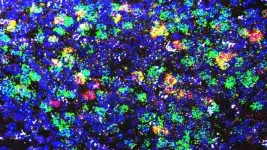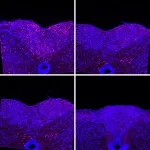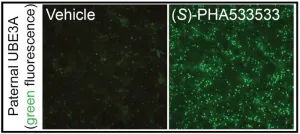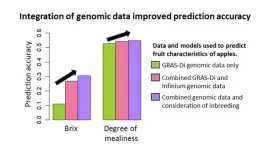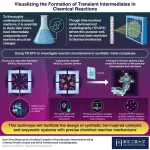(Press-News.org) Cancer is insidious. Throughout tumor progression, the disease hijacks otherwise healthy biological processes—like the body’s immune response—to grow and spread. When tumors elevate levels of an immune system molecule called Interleukin-6 (IL-6), it can cause severe brain dysfunction. In about 50%-80% of cancer patients, this leads to a lethal wasting disease called cachexia. “It’s a very severe syndrome,” says Cold Spring Harbor Laboratory (CSHL) Professor Bo Li.
“Most people with cancer die of cachexia instead of cancer. And once the patient enters this stage, there’s no way to go back because essentially there’s no treatment," he explains.
Now, Li and a team of collaborators from four CSHL labs have found that blocking IL-6 from binding to neurons in a part of the brain called the area postrema (AP) prevents cachexia in mice. As a result, the mice live longer with healthier brain function. Future drugs targeting these neurons could help make cancer cachexia a treatable disease.
In healthy patients, IL-6 plays a crucial role in natural immune response. The molecules circulate throughout the body. When they encounter a possible threat, they alert the brain to coordinate a response. Cancer disrupts this process. Too much IL-6 gets produced, and it begins binding to AP neurons in the brain. “That leads to several consequences,” Li says. “One is animals and humans alike will stop eating. Another is to engage this response that leads to the wasting syndrome.”
The team took a two-pronged approach to keeping elevated IL-6 out of the brain in mice. Their first strategy neutralized IL-6 with custom antibodies. The second used CRISPR to reduce the levels of IL-6 receptors in AP neurons. Remarkably, both tactics produced the same results—the mice started eating again, stopped losing weight, and lived longer.
For Li, the implications were mind-blowing:
“The brain is so powerful in regulating the peripheral system. Simply changing a small number of neurons in the brain has a profound effect on whole-body physiology. I knew there was an interaction between tumors and brain function, but not to this extent," he says.
Li says his team is now determined to figure out how to translate this discovery to human patients. Their recent collaborations with CSHL Professor Adrian Krainer and former CSHL Professor Z. Josh Huang may bring them one step closer. “If we can use what we’ve learned to prevent or treat cachexia, we can dramatically increase patients’ quality of life,” Li says. “This could one day have a big impact on many people.”
END
How to stop cancer cachexia? Start at the top
2024-07-08
ELSE PRESS RELEASES FROM THIS DATE:
Pulsed field ablation procedures found safe and effective for atrial fibrillation patients
2024-07-08
Pulsed field ablation (PFA) is safe for treating patients with common types of atrial fibrillation (AF), according to the largest study of its kind on this new technology, led by the Icahn School of Medicine at Mount Sinai.
The “MANIFEST-17K” international study is the first to show important safety outcomes in a large patient population, including no significant risk of esophageal damage, with PFA. PFA is the latest ablation modality approved by the Food and Drug Administration that can be used to restore a regular heartbeat. The findings, published July 8 in Nature Medicine, could lead to more frequent use of PFA instead of conventional therapies to manage AF patients.
“MANIEFST-17K ...
Why some abusive bosses get a pass from their employees
2024-07-08
COLUMBUS, Ohio – Why do employees sometimes accept working for an abusive boss?
A new study suggests that when a leader is seen as a high performer, employees are more likely to label abuse as just “tough love.”
Results showed that workers were less likely to show hostility to abusive bosses when the leader’s performance was high, and employees were even likely to think their career could be boosted by a successful – if abusive – boss.
The findings suggest that employees may be reluctant to call a successful boss abusive – ...
UNC researchers identify potential treatment for Angelman syndrome
2024-07-08
CHAPEL HILL, N.C. – Angelman syndrome is a rare genetic disorder caused by mutations in the maternally-inherited UBE3A gene and characterized by poor muscle control, limited speech, epilepsy, and intellectual disabilities. Though there isn't a cure for the condition, new research at the UNC School of Medicine is setting the stage for one.
Ben Philpot, PhD, the Kenan Distinguished Professor of Cell Biology and Physiology at the UNC School of Medicine and associate director of the UNC Neuroscience Center, and his lab have identified a small molecule that could be safe, non-invasively delivered, and capable of ...
Study: Weaker ocean circulation could enhance CO2 buildup in the atmosphere
2024-07-08
As climate change advances, the ocean’s overturning circulation is predicted to weaken substantially. With such a slowdown, scientists estimate the ocean will pull down less carbon dioxide from the atmosphere. However, a slower circulation should also dredge up less carbon from the deep ocean that would otherwise be released back into the atmosphere. On balance, the ocean should maintain its role in reducing carbon emissions from the atmosphere, if at a slower pace.
However, a new study by an MIT researcher finds that scientists may have to rethink the relationship between the ocean’s circulation and its ...
Brain size riddle solved as humans exceed evolution trend
2024-07-08
The largest animals do not have proportionally bigger brains - with humans bucking this trend - a new study published in Nature Ecology and Evolution has revealed.
Researchers at the University of Reading and Durham University collected an enormous dataset of brain and body sizes from around 1,500 species to clarify centuries of controversy surrounding brain size evolution.
Bigger brains relative to body size are linked to intelligence, sociality, and behavioural complexity – with humans having evolved exceptionally large brains. The new research, published today (Monday, 8 July), reveals the largest animals do not have proportionally bigger brains, ...
GeneMAP discovery platform will help define functions for ‘orphan’ metabolic proteins
2024-07-08
A multidisciplinary research team has developed a discovery platform to probe the function of genes involved in metabolism — the sum of all life-sustaining chemical reactions.
The investigators used the new platform, called GeneMAP (Gene-Metabolite Association Prediction), to identify a gene necessary for mitochondrial choline transport. The resource and derived findings were published July 8 in the journal Nature Genetics.
“We sought to gain insight into a fundamental question: ‘How does genetic variation determine our “chemical individuality” — the inherited differences that make us biochemically unique?” said Eric Gamazon, ...
Zero-emissions trucks alone won't cut it: Early retirement of polluters key to California's emission goals
2024-07-08
California must implement early retirement for existing heavy-duty vehicles as well as introducing zero-emissions vehicles (ZEVs) to protect Black, Latino and vulnerable communities and hit net zero greenhouse gas (GHG) emissions targets by 2045. This is the outcome of a new study published in Environmental Research: Infrastructure and Sustainability by researchers from Stanford University and Arizona State University.
Stringent policies for mandating both ZEVs and early vehicle retirement could reduce cumulative emissions by two-thirds (64%) and reduce half of pollution-related mortality, particularly among disadvantaged communities.
California is the world’s 5th largest ...
Hexagonal perovskite oxides: Electrolytes for next-generation protonic ceramic fuel cells
2024-07-08
This study presents a significant advancement in fuel cell technology. Researchers from Tokyo Tech identified hexagonal perovskite-related Ba5R2Al2SnO13 oxides (R = rare earth metal) as materials with exceptionally high proton conductivity and thermal stability. Their unique crystal structure and large number of oxygen vacancies enable full hydration and high proton diffusion, making these materials ideal candidates as electrolytes for next-generation protonic ceramic fuel cells that can operate at intermediate temperatures without degradation.
Fuel cells offer a promising solution for clean energy by combining hydrogen and oxygen to generate electricity, ...
Genomic data integration improves prediction accuracy of apple fruit traits!
2024-07-08
Over the past few decades, the world has witnessed tremendous progress in the tools used for genomic analysis. While it’s usually more common to associate these tools with the fields of biology and medicine, they have proven to be very valuable in agriculture as well. Using numerous DNA markers obtained from next-generation sequencing technologies, breeders can make genomic predictions and select promising individuals based on based on their predicted trait values.
Various systems and methodologies aimed at improving the ...
Visualizing short-lived intermediate compounds produced during chemical reactions
2024-07-08
Immobilizing small synthetic molecules inside protein crystals proves to be a promising avenue for studying intermediate compounds formed during chemical reactions, report scientists from Tokyo Tech. By integrating this method with time-resolved serial femtosecond crystallography, they successfully visualized reaction dynamics and rapid structural changes occurring within reaction centers immobilized inside protein crystals. This innovative strategy holds significant potential for the intelligent design of drugs, catalysts, and functional materials.
Most complex chemical reactions, whether synthetic or biological, do not involve ...
